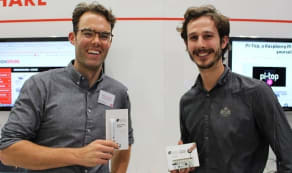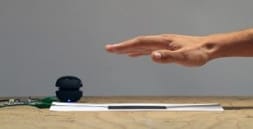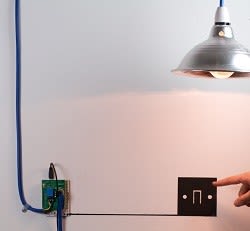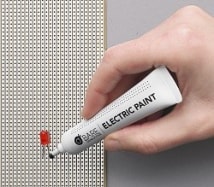Why every Engineer's Tool Box should include a Bare Conductive pen!
Follow articleHow do you feel about this article? Help us to provide better content for you.
Thank you! Your feedback has been received.
There was a problem submitting your feedback, please try again later.
What do you think of this article?
Like a Chef, any respectable Design Engineer should have a basic set of essential ingredients in their tool box to help tackle problems or add a little zest to the recipe. Say hello to Bare Conductive's electronic paint.

The applications for Bare Conductive’s waterbased nontoxic electrically conductive paint are endless. It can be used to learn the basics of Electronics by using it to paint circuits, or at the other end of the scale, drawing in a missing or broken tracks on a PCB.
Here are some great examples of where it has been used.
Drawing and Printing Circuits
Electric paint can be used to draw or screen print low voltage circuits. When drawing circuits, it’s a bit like painting a wire. When it’s dry, it becomes conductive. Screen printing also means that it’s great for creating applications like wearable tech. Electric paint can be used on all kinds of surfaces and substrates including walls, glass, textiles, plastics and wood.
Cold Solder Components
There is not always a soldering iron to hand to make a quick repair of your broken tech, or add or repair a component on a prototype that you have created. Some applications may also be sensitive to heat. Electric paint is an effective conductive adhesive and is applied straight from a handy pen or tub, and is ideal for securing things like through hole components.
Repair a Circuit
When prototyping or making quick repairs, Electric Paint can be a great hack for connecting up a broken track or break in a circuit on a PCB or a piece strip-board. Its adhesive properties also mean that it will make a lasting repair.
Capacitive Sensor and Potentiometer

Touch and proximity sensing can be achieved at a range of scales, it even works through some solid surfaces.
Touch Board

The Technical stuff
Processing Graph & Equation
Typical 55 Ω/Sq @ 50 microns or 32 Ω/Sq surface resistivity when using a brush/manual screen printing. The below graph illustrates how resistance changes with line shape and a simple equation can be applied to roughly predict surface resistance: Resistance = 19.77(length/width) + 12

More about Bare Conductive
Related Articles
10 Things you can do with Conductive Paint - Article





